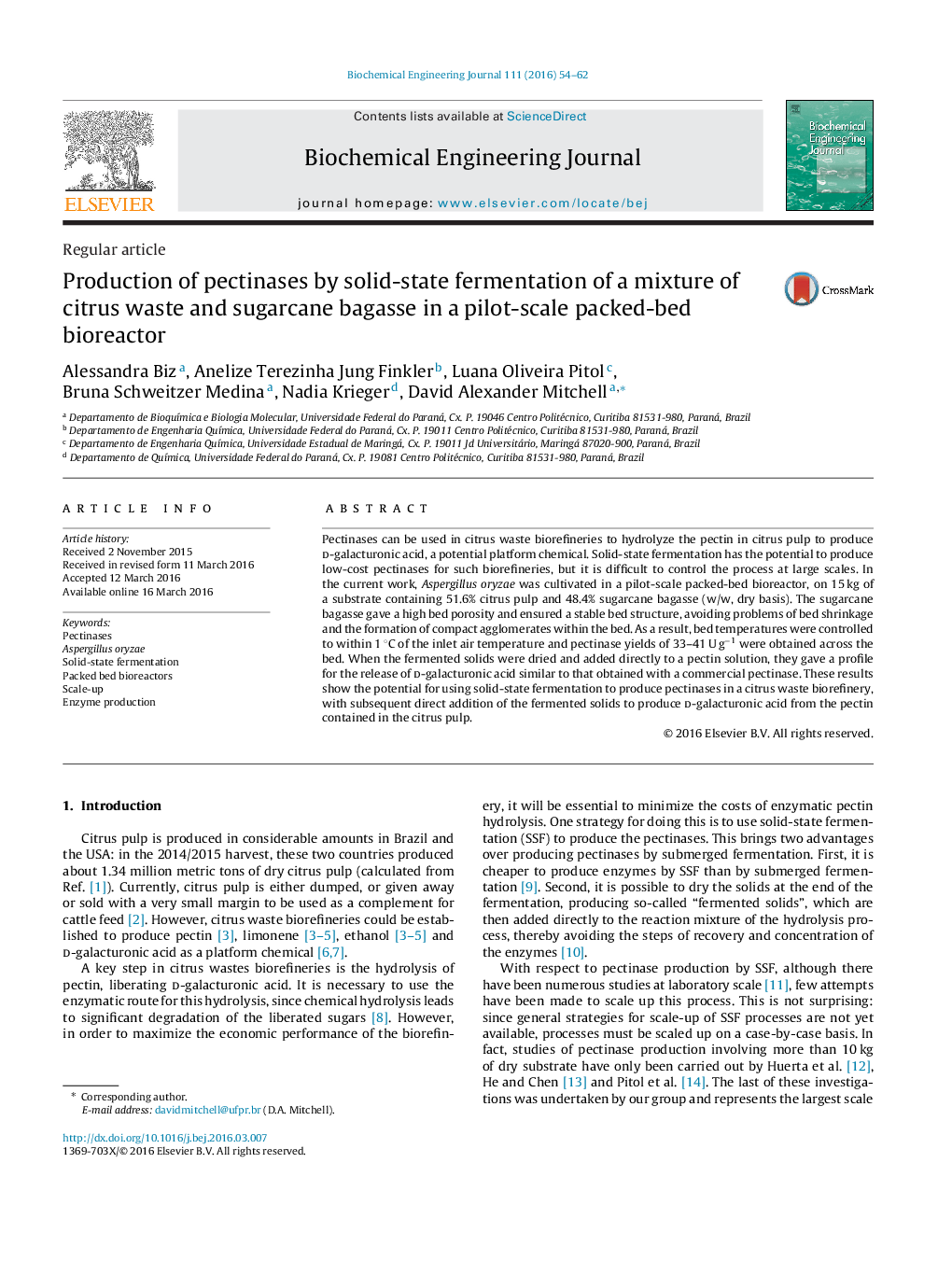| کد مقاله | کد نشریه | سال انتشار | مقاله انگلیسی | نسخه تمام متن |
|---|---|---|---|---|
| 2762 | 130 | 2016 | 9 صفحه PDF | دانلود رایگان |
• Process done with 15 kg dry substrate, corresponding to 65 kg of moist substrate.
• Sugarcane bagasse (48.4% by mass) ensured high porosity and stable bed structure.
• Bed compaction and shrinkage problems and subsequent overheating completely avoided.
• Pectinase activities of 33–41 U g−1 obtained uniformly throughout the bed.
• Proof-of-concept: Pectin can be hydrolyzed with direct addition of fermented solids.
Pectinases can be used in citrus waste biorefineries to hydrolyze the pectin in citrus pulp to produce d-galacturonic acid, a potential platform chemical. Solid-state fermentation has the potential to produce low-cost pectinases for such biorefineries, but it is difficult to control the process at large scales. In the current work, Aspergillus oryzae was cultivated in a pilot-scale packed-bed bioreactor, on 15 kg of a substrate containing 51.6% citrus pulp and 48.4% sugarcane bagasse (w/w, dry basis). The sugarcane bagasse gave a high bed porosity and ensured a stable bed structure, avoiding problems of bed shrinkage and the formation of compact agglomerates within the bed. As a result, bed temperatures were controlled to within 1 °C of the inlet air temperature and pectinase yields of 33–41 U g−1 were obtained across the bed. When the fermented solids were dried and added directly to a pectin solution, they gave a profile for the release of d-galacturonic acid similar to that obtained with a commercial pectinase. These results show the potential for using solid-state fermentation to produce pectinases in a citrus waste biorefinery, with subsequent direct addition of the fermented solids to produce d-galacturonic acid from the pectin contained in the citrus pulp.
Figure optionsDownload as PowerPoint slide
Journal: Biochemical Engineering Journal - Volume 111, 15 July 2016, Pages 54–62
